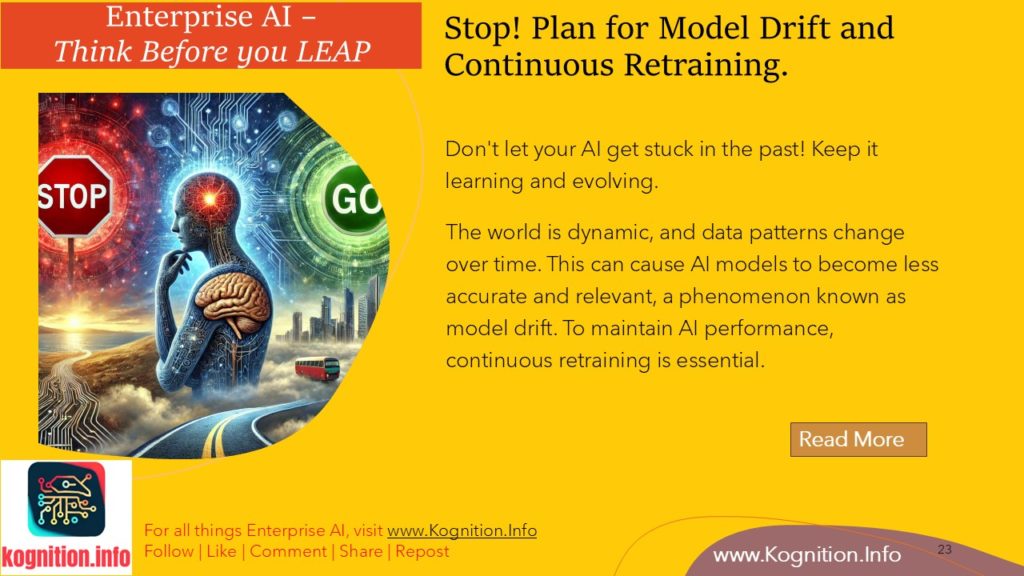
Stop! Plan for Model Drift and Continuous Retraining.
Don’t let your AI get stuck in the past! Keep it learning and evolving.
The world is dynamic, and data patterns change over time. This can cause AI models to become less accurate and relevant, a phenomenon known as model drift. To maintain AI performance, continuous retraining is essential.
- The Nature of Drift: Model drift occurs when the relationship between input data and predicted outcomes changes over time. This can be due to various factors, such as evolving customer preferences, new market trends, or seasonal variations.
- Monitoring for Drift: Implement monitoring systems to track model performance and detect signs of drift. This may involve tracking key metrics, analyzing prediction accuracy, or comparing model outputs to real-world outcomes.
- Retraining Strategies: Develop a plan for retraining your AI models regularly. This may involve using new data, adjusting model parameters, or even rebuilding the model from scratch.
- Automated Retraining: Explore automated retraining solutions that trigger retraining when model performance degrades below a certain threshold.
- The Feedback Loop: Incorporate feedback from users and stakeholders into your retraining process. This helps ensure your AI models remain aligned with evolving needs and expectations.
Remember! AI is not a one-time implementation; it’s an ongoing process. Plan for model drift and continuous retraining to ensure your AI systems remain accurate, relevant, and valuable over time.
What’s Next: Evaluate your current AI models for signs of drift. Develop a retraining strategy that incorporates monitoring, feedback, and automated retraining solutions.
For all things, please visit Kognition.info – Enterprise AI – Stop and Go.
